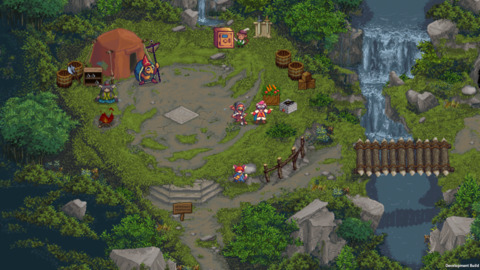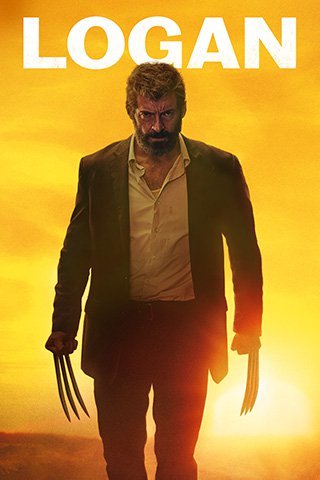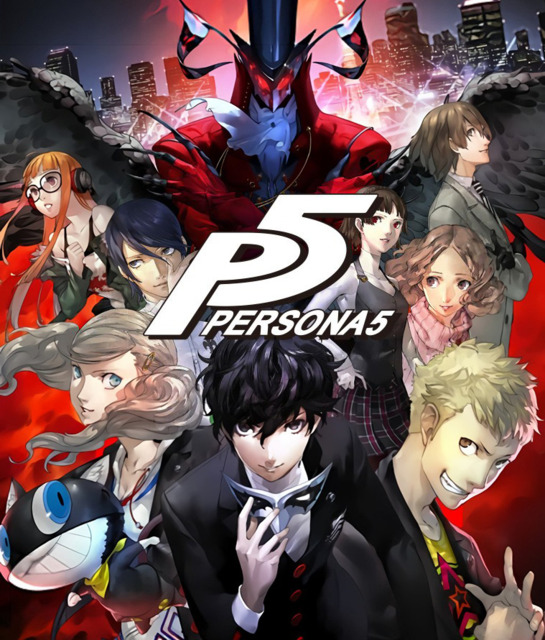Saturday Summaries 2018-01-20: Roguish Edition
By Mento 1 Comments
Towards the end of last year, when I was plowing through a group of 2017 Indie games for Go! Go! GOTY!, I hit upon an unusual number of roguelikes. It's a format that, along with spacewhippers and other old-school genres like point-and-click adventure games and first-person dungeon-crawlers, is something the Indie market has been resurrecting with a vengeance of late.
I have a few ideas for why this is, without necessarily making the effort to really dig deep and, say, ask the people who made them with the interviews and such. That seems like hard work. Instead, I'm tossing out the following theories:
- Like the genres above, it was a genre type that was undeveloped by major developers. In fact, there have been precious few AAA games with permadeath and procedurally generated levels. The few I can think of are Diablo, in which the Ironman mode only became an option a few games in, and something like Dungeon Hack, which took its name from NetHack - probably the most popular of the true roguelike variants - and the structure and art assets from Westwood's Eye of the Beholder series. The Indie market excels at revisiting periods in video game development history where a promising new vein of game design went underdeveloped by the major publishers of the era, giving them an opportunity to pick up where they abruptly left off.
- The second, and slightly more cynical theory, is that focusing on a roguelike progression structure, in which the game is constantly looping and randomizing its layouts with each iteration, saves a lot of time and effort from having to hand-craft every single dungeon floor. Instead of carefully considered level design, the roguelike developer can focus on character progression, inventory, monster behavior and other bare essentials. If there's at least some work put into making dungeon floors visually disparate between "regions", that's often enough.

I realize the second explanation sounds kind of accusatory, but there's a significant and important draw to any game developer if they're able to minimize or excise parts of the laborious process of developing professional-quality games with small teams. It's the same principle behind "programmer graphics" - games that take a hit in visual quality to account for how the creator's true talents lie in coding and design, which is often why store-bought assets are a godsend for the artistically deficient - or those that focus on antiquated genres of the 8-bit and 16-bit eras which are significantly less expensive to produce in the present day. Moreover, creating an RPG from scratch requires a lot of time; a resource your average Indie developer doesn't have in abundance if they aim to make a living at what they do.
It's for these reasons that I've made my peace with every other promising Indie RPG boasting permadeath and randomized dungeons: as much as I'd prefer the alternative, I recognize how costly and inconvenient that would be for their developers, and roguelikes are subsequently less an annoying persistent fad than a more rational means of crafting a fully-fledged RPG experience with everything that matters to genre fans - character development, plenty of loot, a relatively stable difficulty curve, multiple risk vs. reward decisions per playthrough, strong monster variation - within a comparatively compact development period. Thankfully, the big elaborate story-based RPGs are coming back in the AAA space if the present embarrassment of RPG riches - Persona 5, Xenoblade Chronicles 2, Ys VIII, Divinity: Original Sin 2, Torment: Tides of Numenera, NieR: Automata, to name a few from last year, and the upcoming Ni no Kuni 2, Octopath Traveller and Pillars of Eternity 2 - are anything to go by, and I doubt I'll be running out any time soon.
Speaking of boundless, here's another week's worth of blog reading if the above didn't contain nearly enough verbosity for you:
- The Indie Game of the Week this time was Octodad: Dadliest Catch, which is one of the older items on my Indie backlog queue. I wasn't too impressed by its mid- to late-game, but I could at least recognize the great idea at its core. In my mind, it's like the Scribblenauts franchise: sometimes you come up with a concept so good that you're not sure what to do with it, and the first Scribblenauts was this awful repetitive series of escort challenges where you'd invariably hook the key item to a vehicle and drag it to the goal, which entirely missed the point of the endless creativity the game's model offered. The sequel, Super Scribblenauts, was a far superior realization of that premise because it focused on clever "what item do I need to solve this?" logic puzzles instead of weak platforming challenges, and became an excellent game in its own right. I'd say the Octodad franchise is equally capable of a similar course-correction in its future, if its developers can realize it.
- I started the other of my two alternating Tuesday features this week, named Rainy Days and Mundis. It looks at a specific strain of casual adventure game known as the H.O.P.A. - Hidden Object Puzzle Adventure - which combines hidden object puzzles, the like where you have a cluttered screen of junk and must pick out items from a list the game gives you, with a more traditional first-person point-and-click adventure game filled with inventory puzzles and Professor Layton-style brainteasers. I'm particularly fascinated by the formula these games stringently stick to, especially in those crafted or published by the Polish masters of the genre Artifex Mundi, and I'm playing several of them to see just how domineering this blueprint is and how often the games diverge from it. Of course, in order to determine that I'd have to play several of them - I'm looking at a ten game series right now, though it might go longer or shorter depending on how much gas the concept has. At any rate, the inaugural episode looks at Grim Legends: The Forsaken Bride, the first of a trilogy of sinister fairytales.
Addenda
Movie: Logan (2017)

2018 Moviewatch continues with the marvellously bleak Logan, the last of Hugh Jackman's stints as the mutant Wolverine in the X-Men universe. An embittered and ailing older version of the character, this Logan is coerced into delivering a young mutant - the first he's encountered in 25 years, after they mysteriously stopped appearing - to a promised point in North Dakota, the opposite side of the country from where he's been eking out a living as a limousine driver in El Paso, Texas. This young mutant, Laura (or X-23 to the faceless corporation that created her), has Wolverine's claws and healing factor, as well as his occasional bouts of unfettered rage and lack of people skills. In addition, Wolverine's also been attending to an equally ailing nonagenarian Professor X whose Alzheimer's-like brain disease causes cataclysmic telepathic seizures.
It's not a happy movie, let's just say, though it is an ultimately hopeful one. For as ornery as this Logan is, he still stays true to his superhero ideals - most significant is the gratitude he feels towards Professor X, even if the rest of the X-Men are extinct, and his efforts to ensure his seizures don't get out of control. Stifled by his lack of freedom and cluttered mind, Professor X - simply named Charles for most of the movie - takes it out on Wolverine and his other handler, the "tracker" albino mutant Caliban, creating a very empathetic and human take on the once nigh-omniscient psychic mastermind. In fact, the movie is full of great performances, from the smarmy and sinister cyborg villain Donald Pierce (Boyd Holbrook) to a wonderful natural performance from child star Dafne Keen, who plays Laura like Millie Bobby Brown's Elle from Stranger Things: half oblivious ingenue who has yet to see the world outside her lab rat cage, half uncontrollable ball of rage ready to snap at any adult - good or bad - who gets in her way.
I think what I appreciated most about the movie is that, through all the grit and grimness and R-rated violence, it's still an X-Men story deep down. It's about mutants who are at odds with the world of humans being treated as freaks and scientific curiosities, and how they try to rise above the low expectations given to them. It's about Wolverine coming to terms with his angry past and reaffirming his almost expired sense of compassion and altruism, even as he continues to grow more scarred (in all senses of the term) and weaker with every injury. Ultimately, it's about hope and passing the baton to the next generation of X-Men: something Jackman's been wanting to do with this character for a while now.
For as much as people tend to dismiss the 20th Century Fox corner of the Marvel canon compared to the far more slick "Marvel Cinematic Universe" and its annual installments (though I suppose it's all one big happy family now thanks the recent Disney merger), the occasional R-rated movie like Deadpool and Logan really highlight what's possible for the superhero genre if it's willing to take a few chances. It's why people are taking a shine to the more auteur-driven Guardians of the Galaxy (James Gunn) and Thor: Ragnarok (Taika Waititi) or those driven by minority (within Hollywood, at least) voices like Wonder Woman (Patty Jenkins, a woman) and Black Panther (Ryan Coogler, an African-American). When there's four or five new superhero movies a year, it pays to have an original edge; but more so than that, someone who has a lot of emotional stakes in the characters they're bringing to the screen. The Guardians are perfect for a director who has always worked on the fringe, Wonder Woman's probably the most important female superhero in the world, and Black Panther is one of the few original black champions of the Marvel universe. These characters are far more than just a paycheck for the directors and actors that are working on them, and that really goes a long way towards ensuring a quality heart-and-soul production. I'm sure the case was the same for those behind Logan - James Mangold, who directed the previous Japan-set The Wolverine, and Jackson himself, who was probably more than eager to see off his most famous character in such a conclusive fashion.
Game: Persona 5

I'm in July now, so I feel like I've settled well into Persona 5's groove of exploring dungeons and managing my social and academic life. In that regard, P5 is very similar to the previous two games: when you aren't in dungeons progressing the plot, it's often difficult to decide between building social stats and hanging out with social links - both are invaluable to the dungeoneering and Persona fusing process, but I'm really more invested in seeing as much as possible of the incidental character studies that each social link provides.
It's for that reason that I wanted to focus on the game's characters for this installment of my Persona 5 rundowns. The Persona games often have the best ensemble casts, bolstered by these one-on-one social link cutscenes and fighting alongside them in battles, and 5 goes one step further by making each "Confidant"'s contribution to your cause unique, even among party members. For instance, there's a party member that will duplicate "cards" for you: items that essentially work the same as Pokemon's "TMs" in giving abilities to Persona that don't naturally earn them. Other Confidants offer you talents such as boosting how many Persona you can carry at once, being able to switch out party members mid-battle, increasing the number of free stat-building periods during the daytime, and more items at important vendors.
What follows are my takes on the characters I've befriended as of July in-game, and I've spoiler-blocked the section just in case:
That's going to do it for character rundowns for this week. I might pick up with the remaining party members (I think I'm about to recruit the dedicated support character, a la Fuuka Yamagishi or Rise) and other Confidants next Saturday. I will say that Persona 5 is every bit the jump Persona 4 was, improving on myriad quality-of-life touches that largely go unnoticed unless you're explicitly seeking them out for review purposes. Still the same nonsense too - so far I've had the hero fall to a single instant-death spell leading to an immediate game over and about a half-hour of progress lost, which is pretty much a compulsory initiation into any new MegaTen game - but it's overall better, I'd say.
What I really appreciate, and this ties all the way back to the roguelike stuff at the lede, that the game's main dungeons - the Palaces - are all pre-generated dungeons with set-pieces and puzzles to solve, but if you missed the procedurally generated loot and floor layouts from previous entries the game has you covered with "Mementos": an ongoing tiered dungeon that regularly expands after story events that's not unlike P3's Tartarus, and is perfect for farming rare Personae, money and items between story missions (especially since Palaces disappear forever once completed) and even includes side-questing in the form of optional bosses found on certain floors. It's too early to say whether or not I prefer Persona 5 to 3 or 4, but I'm definitely happy with the choices it's made so far.
